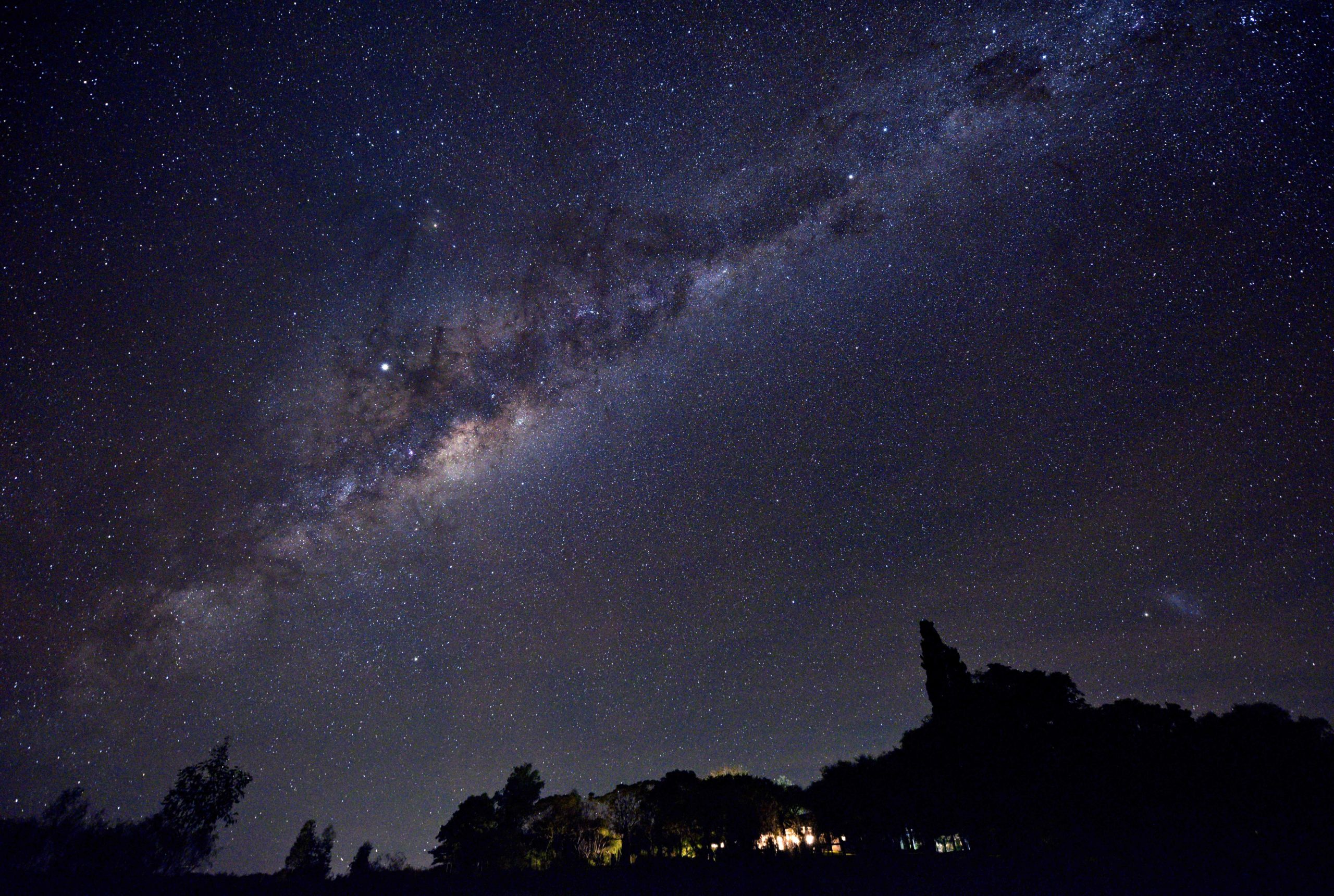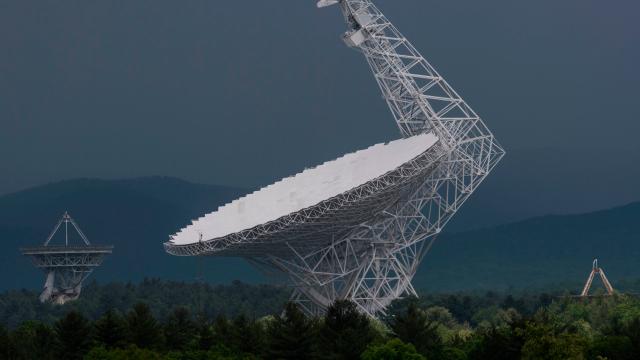Using a signal from dozens of rapidly spinning, dead stars, astrophysicists have gotten closer to realising their goal of detecting a background rumble of gravitational waves in the universe.
When the existence of gravitational waves was confirmed in 2016, a new field of astrophysical research opened up. Two black holes collided, sending out a ripple in the fabric of space-time that was detected on Earth when it caused a blip in the sensitive instruments of the Laser Interferometer Gravitational-Wave Observatory. Since then, scientists have picked up more gravitational waves produced by massive smash-ups, but they’ve also been looking for ways to see the so-called gravitational wave background. To use a metaphor: We’ve detected large waves that rocked our planetary boat, and now we want to see the whole mess of waves churning out in the cosmic ocean.
Last month, the North American Nanohertz Observatory for Gravitational Waves published its latest dataset in The Astrophysical Journal Letters. The data — 12 and a half years’ of it — was compiled from observations made by the Green Bank Telescope in West Virginia and the recently collapsed Arecibo Observatory in Puerto Rico. The paper describes what may be a telltale pattern in the light from 45 pulsars. It’s a step toward identifying the gravitational wave background.
“What we’re finding specifically is a low-frequency signal, and it’s a common signal amongst all pulsars in the array,” Joseph Simon, an astrophysicist at the University of Colorado Boulder and lead author of the recent paper, said at a press conference today. Simon said that signal “is what we expect the first hints of the gravitational wave background to look like.”
Pulsars are the dense, spinning remnants of some dead stars. Millisecond pulsars spin extremely fast — hundreds of times per second — and a select few do so reliably enough that they allow researchers to catalogue the minute changes in the relative position of our planet to those pulsars. Using the radio wave pulses from the Milky Way’s pulsars in an array, the team effectively conjured a galaxy-sized network of detectors for low-frequency gravitational waves, generated by the orbits of supermassive black holes rather than their collisions. The gravitational background the team searches for would appear as more of a constant, jumbled murmur in space-time than an isolated blip like the one detected by LIGO in 2016.

Gravitational waves were predicted by general relativity. Decades of astrophysical analysis has concluded that such waves would cause changes in the timing of pulsars’ light reaching Earth. A gravitational wave background would affect the light we see from the pulsars based on each one’s location and relative position, and a certain correlated pattern in changes to that light would indicate a gravitational wave background. The team hasn’t officially found the pattern, but they think they’ve spotted the beginning of it.
Even though the astrophysicists have examined over 12 years’ of data from their array of pulsars, they still need more time and more pulsars to be sure of the pattern. The waves the team documents have much longer wavelengths than the gravitational waves detected by LIGO in 2016, so the research progress has been gradual.
One challenge is that the pulsars’ pulses are timed using atomic clocks, which can lose their precision. But atomic clock errors were ruled out in the recent data, according to Scott Ransom, a staff astronomer at the National Radio Astronomy Observatory and a co-author of the recent paper.
Ransom likens the gravitational waves to waves in the ocean of space-time, coming from different sources near and far. The gravitational waves interfere with one another and lap up against an Earth bobbing in that ocean, stretching and compressing the planet ever so slightly.
“What we can infer from that is just like whether you can see the ocean being calm or being rough,” Ransom said in a phone call. “We can get a lot of information about the full history of the universe and how galaxies merge and interact just by seeing this background signal.”
Both Simon and Ransom mourned the loss of the Arecibo Observatory radio dish, which collapsed in December after two cable failures. The research team was drawing data from the observatory up until the first cable broke, and the recent paper only included data through 2017. Their current dataset will provide a sort of afterlife of Arecibo, as it will contribute to the search for a gravitational wave background for years to come.
